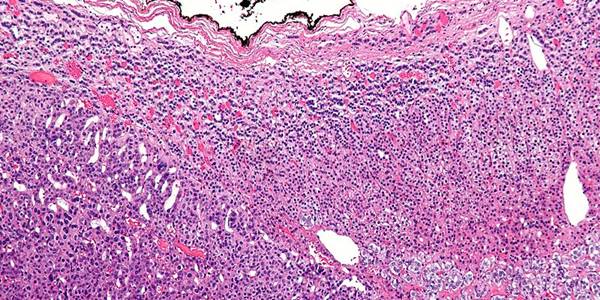
Twelve years ago yesterday I was talking with my dear friend Alice, who runs a wonderful menopause site, Power Surge, wondering why there weren't many support groups online (OR off!) for Cushing's and I wondered if I could start one myself. We decided that I could.
This website (http://www.cushings-help.com) first went "live" July 21, 2000 and the message boards September 30, 2000. Hopefully, with this site, I’ve made some helpful differences in someone else's life.
Who could have known how this site – now sites – could have grown and grown.
It started as a one-page bit of information about Cushing’s In people, not dogs, horses, ferrets…
Then, it started growing and growing, taking on a life of its own. To truly emulate Alice, I added message boards in September. They were really low-quality, a type put together by an old HTML editor but we had members and actually had discussions.
Not too long after, a real board was opened up and things really started happening. Then we outgrew that board and ended up in our current home.
The message boards are still very active and we have weekly online text chats, live interviews, local meetings, email newsletters, a clothing exchange, a Cushing's Awareness Day Forum, podcasts, phone support and much more.
Whenever one of the members of the boards gets into NIH, I try to go to visit them there. Other board members participate in the "Cushie Helper" program where they support others with one-on-one support, doctor/hospital visits, transportation issues and more.
Things have changed over the years, though. The original Cushings-Help site is still updated with new bios, new Helpful Doctor listings, meetings and more but all new articles have moved to a new site - http://www.cushie.info/ – which is much easier to maintain than the older strictly-HTML site.
Also new are a CushieWiki, a site for the Cushing’s Help Organization, several blogs (of which this is one), three Facebook entities (Cushing's Help Cause; Cushing's Help and Support Group; and the Cushings Help Organization, Inc.); a Twitter stream and much more.
New recently:
NEW! Daily News Summary at Cushing's Daily News
NEW! cushie.info is now optimized for viewing on PDAs and mobile phones
NEW! Medical Centers. These are centers which specialize in Cushing's, pituitary or adrenal patients. If you, as a patient, have one that you'd like to have added, please send any info you may have to Mary O'Connor (MaryO). Thank you!
Occasional Newsletters are Back: Members of cushie.info will automatically receive these occasional newsletters. Of course, you may opt-out at any time. Thank you for your interest. Non-members may subscribe through the Newsletter Subscription module on the left side of this page.
Cushie Toolbar: Be the first to know! The Cushie Toolbar features a Google search box, the 911 Adrenal Crisis! page, the Cushie Reads book recommendations page, Cushie Calendar, all the bios, arranged by diagnosis type or date, add (or update) your bio, our locations around the world, the message boards and chatroom, Helpful Doctors list, add (or update) your Helpful Doctor, support page, scrolling message area for Cushing’s news, Cushing’s blogs, NIH Clinical trials for Cushing’s, pituitary and adrenal, the Cushings Help Organization cause on Facebook, Staticnrg and Cushings on Twitter, new CushieWiki and listen to the Cushing’s podcasts right from this toolbar.
CushieWiki: Please feel free to contribute! The CushieWiki is an ever-changing, ever-growing body of Cushing's knowledge provided by *YOU* and other patients.
Members of the cushie.info site have additional features:
We’ve grown out of control from that simple one-page info sheet to way more than I could have ever imagined in that phone conversation with my friend. I would never have thought that I could do any of this, provide these services and touch the lives of so many others.
I also never thought that I would spend hours a day updating, adding, improving, helping, emailing, phoning, paperwork, writing…
But it’s all worth it if the lives of other Cushies are made better.

-->
Here’s to another 12 years…




 -->
--> 